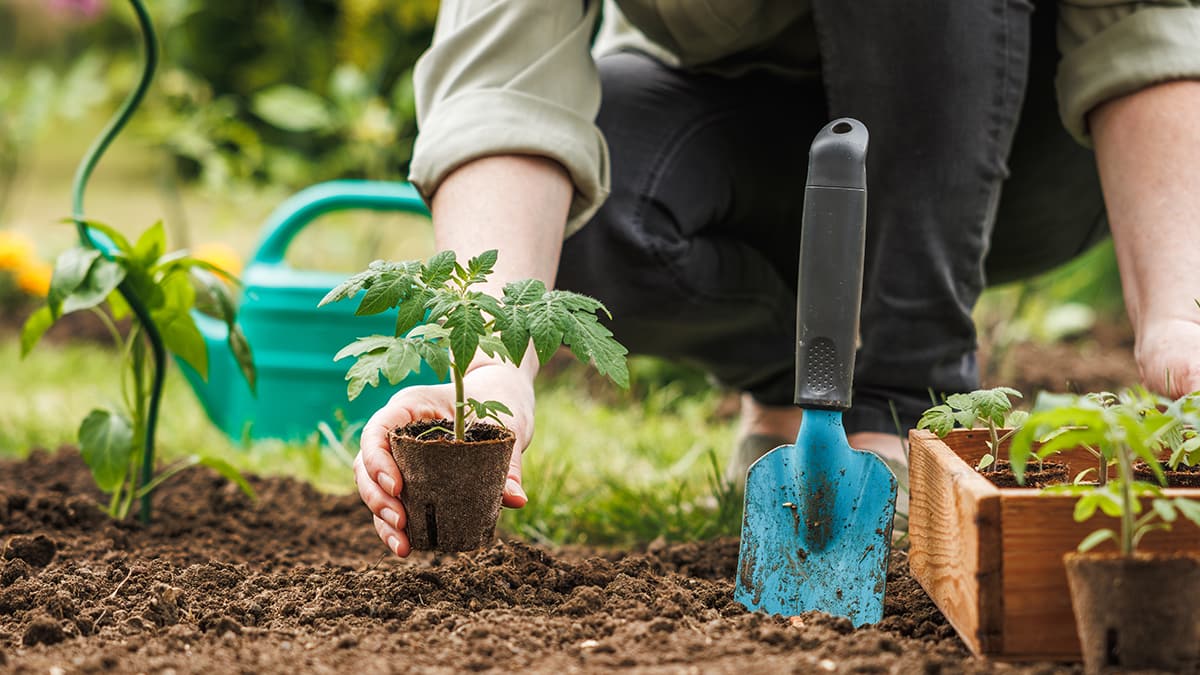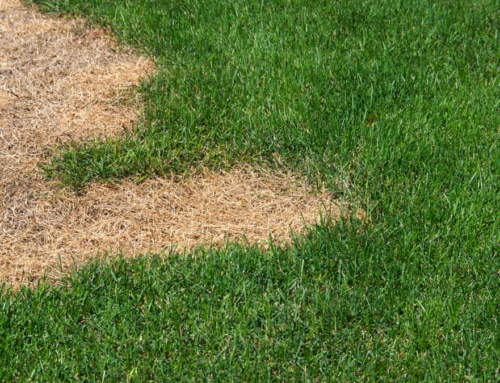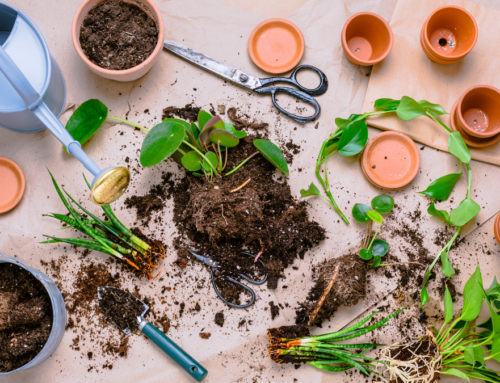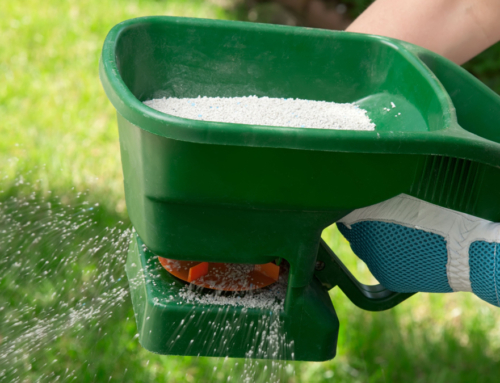Troubleshooting Planting Problems in Northern Colorado

In Northern Colorado, where the climate is dry, the soil is clay heavy and the weather can turn on a dime, understanding your environment is essential for successful gardening. Here’s a practical guide to mitigating common planting problems on our home turf.
Know Your Soil
Healthy soil is the foundation of any successful garden. Northern Colorado soils are typically alkaline and clay based. Great for construction, but not so great for tender roots.
Basic soil composition includes:
- Minerals: Sand, silt and clay
- Organic material: Compost or aged manure
- Air and water pockets: Critical for root health and nutrient movement
Build Better Soil with Compost
Clay heavy soils don’t drain well, which can lead to root rot and weak plant growth. However, soil can be improved by adding compost.
Best practices:
- Loosen compacted soil 12-18 inches deep
- Add 2-3 inches of organic compost each year
- Test your soil’s pH and adjust as needed
- A good pH range for gardens is 6 or 7
Tailor Soil to Plant Needs
Soil isn’t one size fits all. Tailor your mix to the specific needs of your plants and planting environment.
In-ground Beds
- Improve your soil to match what you’re planting
Potted Plants
- Use lightweight, well-draining potting mixes
Houseplants
- Customize soil for best results:
- Cactus and succulents: Fast draining cactus mix
- Orchids: Loose orchid bark for air circulation
- Tropicals: Peat based mix with perlite for balanced moisture
Container Planting tips
Drainage is Non-Negotiable
Always use containers with drainage holes. If you love decorative pots without them, use a nursery pot inside to protect roots from excess water.
Size Matters
Some plants like herbs or succulents enjoy crowding. Others need room to grow. Choose a container that allows for root expansion without holding excess moisture.
Use the Right Soil
Avoid using garden soil in containers. It’s too dense. Use a high quality potting mix designed for containers. These mixes balance moisture retention with proper drainage. For a boost, mix in slow release fertilizer or organic compost.
Watering Techniques
Water with Intention
Overwatering is just as common as underwatering, especially in our dry climate. Check the soil before watering. If it’s damp an inch down, hold off.
Adapt to the Weather
- Water more during hot, dry stretches
- Cut back during cooler days or after rain
- Wind dries out soil quickly especially in exposed areas
Use Drip Irrigation Wisely
For garden beds or large containers, drip irrigation is a smart choice. It delivers water directly to roots, minimizing evaporation. Just make sure emitters are correctly placed and check for clogs regularly.
Fertilizing and Plant Nutrition
Follow the Label
Fertilizer is powerful. Too much can burn, too little does nothing. Always read and follow the instructions.
Feed at the Right Time
- Most plants benefit from fertilizer:
- At the start of the growing season
- Just before blooming or fruiting
- Mid-summer (especially for annuals and vegetables)
- Avoid fertilizing during extreme heat or drought stress, as it can do more harm than good.
Pro tip: Choose plants that thrive in our climate! Think native perennials, drought-tolerant shrubs and hardy vegetables like kale, carrots and beans.
Do your homework
When choosing plants, begin by asking the right questions:
- What kind of soil do they need?
- How much sun and space?
- Do they thrive when crowded or spaced apart?
And remember that, while gardening in Northern Colorado is an incredibly rewarding activity, it does have its tricky parts.
- Late spring frosts can surprise you, so monitor forecasts closely.
- Be considerate of high altitude sun that can scorch sensitive plants, as well as where your plants will get caught in afternoon shade.
- Wind and low humidity dry out soil quickly, especially in containers.
- The short growing season means timing is everything, so start seeds indoors when needed and hold off planting frost sensitive crops.
Pro tip: Choose plants that thrive in our climate! Think native perennials, drought-tolerant shrubs and hardy vegetables like kale, carrots and beans.






